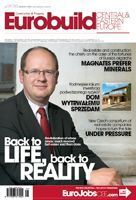The question when looking for a new home is whether to live near the city centre or outside, with all the bother of commuting. Central and Eastern European developers are still preferring not to take the risk and are building apartments. but there has been a clear surge in buyers for single-family houses Zuzanna Wiak, Mladen PetrovIn the largest Polish urban centres, estates with single-family houses are mainly to be found on the outskirts of the city or in districts where no growth was expected a few years ago. Where there were once just fields, there now remains only islands of open land between new developments. Warsaw’s Białołęka district is one such location, where Dom Development has decided to develop 88 semi-detached and terraced houses, alongside 17 three-storey multi-family buildings. The company is also selling homes in the Wille Laguna 2 estate in Ursynów district, but is not planning any more housing estates in the ne






























































